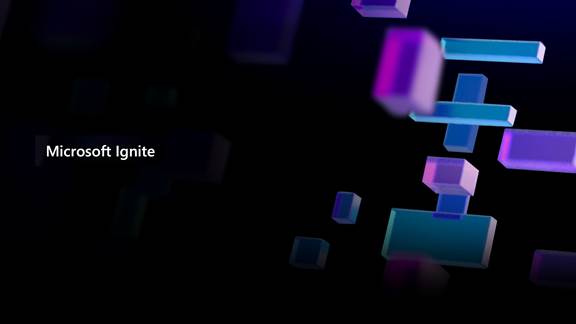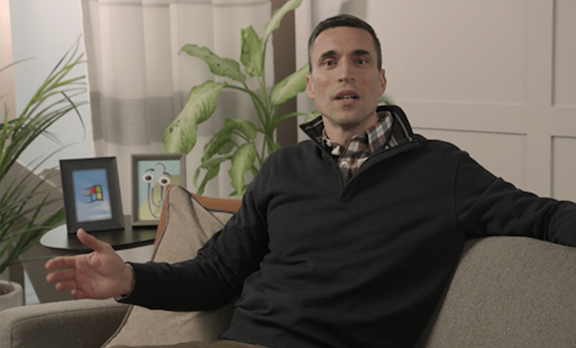The theme of Microsoft’s second virtual Ignite conference, held March 2-4, 2021, offered an opportunity for attendees to look ahead and take the challenges from the past year and transform them into new opportunities. The conference focused on its vision of post-pandemic new realities and the importance of leveraging the cloud, AI, mixed reality, and security services for organizations. Despite being held digitally again, the event allowed attendees all over the world to connect with peers, meet experts, and learn new skills.
Microsoft CEO Satya Nadella opened with a keynote describing the events and challenges that accelerated digital transformation across all industry sectors. The public cloud is a key enabler of many examples he cited, including curbside ordering, telehealth, remote manufacturing, work from home for most workers, and video communications with family and friends.
Satya noted that, while these capabilities were not made possible overnight, they were available when consumers needed them because of Microsoft’s commitment to investing in new technologies and ways of thinking. Digital innovations took on new prominence from early 2020 as countless technological advances were put on an accelerated path. Now, Satya said, as an industry and as a company, Microsoft is looking ahead to what comes next.
At Kin + Carta, we agree with Microsoft. The technology baseline in the business world has shifted upward as a result of meeting unexpected challenges, and leaders must consider how to maintain the momentum of digital transformation and continue making lives better through technology.
During the three days of Microsoft Ignite, the Kin + Carta team attended several sessions to discover, connect, and learn. The following key takeaways and personal perspectives are offered by some of our leaders.

Microsoft Ignite 2021: A Resilient, Reimagined Future.
Mark's Key Takeaways:
Satya's Keynote and the Announcement of Microsoft Mesh
As always, I was inspired by Satya's keynote and enjoyed trying to guess the significance of the various strategically placed artifacts on his bookshelf (two cricket balls and a signed American Football -- most intriguing). He announced that we are in the second wave of digital transformation led by the cloud, characterized by these five attributes:
1. Ubiquitous and decentralized computing
2. Sovereign data and ambient intelligence
3. Empowered creators and communities everywhere
4. Expanded economic opportunity for every member of the global workforce
5. Trust by design
Of the newest products, I’m keenly interested in Microsoft Mesh and how it can support the development of the employee experience. Watching the James Cameron virtual interview about Avatar and Titanic and how he used virtual reality to help him dive to the bottom of the ocean was exceptionally cool!
The Launch of Customer Journey Orchestration
Muhammad Alam, Corporate VP of Dynamics 365 at Microsoft, talked about what differentiates a modern organisation from its competitors and offered his hypothesis on the "death of traditional CRM." It was fascinating, and I totally agree that "no app is complete in and of itself" and that, as a partner, we are selling Microsoft-based platforms rather than individual solutions. On a related note, we are very excited about the launch of Microsoft’s Customer Journey Orchestration (CJO) for AI-driven, cross-channel customer journey orchestration. As a global launch partner, Kin + Carta will be extensively involved in introducing this solution to our customers. In other news, I loved Lori Lamkin's introduction, in particular the UNICEF 'art of the possible' demo, highlighting the power of the combined CJO, D365 Customer Insights and Marketing platform. I also had the privilege of joining Wednesday’s roundtable with the Microsoft product leadership teams and my peers from other partners. We got a sneak peek into the roadmap for the platform; it is amazing to see the progress in these products.
The Continued Rise of the Power Platform
It is great to see the continued growth and investment in the Power Platform. I was surprised to hear Charles Lamanna, Corporate VP, Low Code Application Platform at Microsoft, report that there's a one million shortfall in developers in the US alone, driven in part by the digitalization of businesses in response to COVID. It was particularly good to hear that "Power Platform loves developers." This allows devs to leverage low-code programming alongside coding tools that they are used to. The launch of Power FX as an open source language for low-code programming was equally interesting.
Scott's Key Takeaways:
Envisioning Tomorrow
This session blew my mind. Demonstrations with SuperGlue used their machine learning model, Microsoft Turing, then showed how the model could interpret natural language questions about Avengers Endgame and find the answers by scanning the movie. The model was trained on their massive supercomputer which has something like 22 terabytes of RAM and over 400 processors. It is something a supervillain could use to destroy the Avengers (which is not how it happens in Endgame so no spoiler alert needed). Another cool demo was showing how Bell, a helicopter and drone manufacturer, uses a computer simulation of a virtual world (using Microsoft Autonomous Systems) to train models that will fly drones. They can crash as many simulated drones as they want without destroying a real drone as they build a model that can guide an unmanned drone to locate a lost hiker.
New Innovations to Bring AI to the Edge
Microsoft did a great job of conducting user research, interviewing over 500 of their own customers to find out their biggest pain point in taking the Internet of Things (IoT) from proof of concept (PoC) to production. It turns out that less than 20% of PoCs move to production. The number one problem expressed by 100% of the customers was lack of an end-to-end blueprint. Current options are too expensive or too complicated. This was quickly followed by the inability of vendors to find customers (and vice versa), security, and managing Azure services.
The solution, Azure Percept, allows a user to start prototyping in minutes with hardware accelerators that integrate with Azure and run models on devices. This includes Percept Studio, which helps users train and deploy pre-built models or their own models. Microsoft and ASUS formed a partnership to create a flexible set of IoT devices that are pre-integrated into Azure. These devices include a camera with object recognition, a microphone with voice recognition, and a trusted platform module that includes WiFi and Bluetooth connectivity. This looks like a great way to start on and deliver your next IoT project.
Go Limitless: With Azure Data & AI
There were so many exciting announcements in this session, it was hard to keep track of them. If I tried to write about the highlights, it would take pages, so here is a summary:
- Just like they have for SQL, Microsoft now has a fully-managed instance of Cassandra on Azure. This can be linked to an on-premises Cassandra instance or a Cosmos DB. This will allow users to sync data between the datacenter and Azure without having to administer the Cassandra instance on Azure. Azure Cosmos DB now has a link to Azure Synapse. This will fill in a gap in the Synapse offering and increase its reach.
- Azure Synapse Pathway is a major breakthrough in data migration. It scans your source systems and automatically translates scripts into T-SQL. This will allow you to rapidly move off of other DW solutions such as Teradata, Snowflake, Netezza, or Redshift.
- Azure Cognitive Search has the ability to add semantic search into its search capabilities. Semantic search doesn’t just look at keyword frequency and popularity but also looks at the context of the information to improve the usefulness of your search results. For example, searching for “how common is a sore throat among COVID-19 patients” will turn up articles about COVID-19 and sore throats but semantic search will serve up articles that have both of those attributes together as well as how common it is.
- Finally, Purview, Microsoft’s data governance tool, now supports Oracle as well. This update, which came rapidly on the heels of the product going GA, gives me hope that this tool will continue to evolve quickly and soon overtake the rest of the marketplace.
Random Observations
- People really, really love to join a chat, say hello, and then say where they are from.



- And sometimes give you a weather report.

- Microsoft Mesh, which was shown during the keynote, is incredibly cool. It allows you to have shared experiences through a HoloLens or other compatible device with another person in the same room or across the globe; allowing a surgeon to guide another surgeon through a complex procedure or for two people to play Pokemon Go. However, Microsoft also used it to show a new virtual world experience created by one of the guys who started Cirque du Soleil. For a crowd that gets excited about a new governance feature or the availability of a new managed instance of a NoSQL DB (Cassandra) on Azure, showing something that looked like a cross between Second Life and Burning Man led to some confusion which was best expressed by this gentleman.

- Clippy will never go away.

Nick's Key Takeaways:
Ask The Experts: Zero Trust
Zero Trust became center to the message about securing resources. This is a clear message from Microsoft about their view of application security in 2021. We have had previous guidance on the different approaches, but the mantra came loud and clear this year - ZERO TRUST. It's not just something that can be switched on. You need to create an approach to identity management, application authentication, and network security. I am looking forward to discussing with clients how we can help them achieve this.
Azure Migration | New Unified Tools for Discovering and Assessing Databases, .Net Apps and Vms
One of the best new features to help migration project speed is having automation do some of the work in moving .Net and Java based apps to containers from traditional hosting architectures. I won’t be fooled into thinking that I can point tooling at an application and let it all happen, but I certainly appreciate the help to get it done. Here are some great resources at Microsoft Learn that can help. On the complex head scratching stuff, don’t go it alone. Come talk to us at Kin + Carta and we can get you there.
Ask The Experts: Azure Networking
I loved this session. The announcement of the Azure Route Server is just great. If you have implemented user-defined routes or a third party firewall in Azure you will appreciate this. No need to manually update routes when you make a network change; use BGP to do it. This will help in all the network designs I put together saving transit costs for clients. Microsoft's network is going to take even bigger slices of their sales as customers migrate to the largest global network on the planet. Changes to Azure load balancer and Azure firewall, IP backend pools, multi region support, and added URL filtering are other cool features. There is a lot to talk about. Reach out and let's talk Azure networking.

